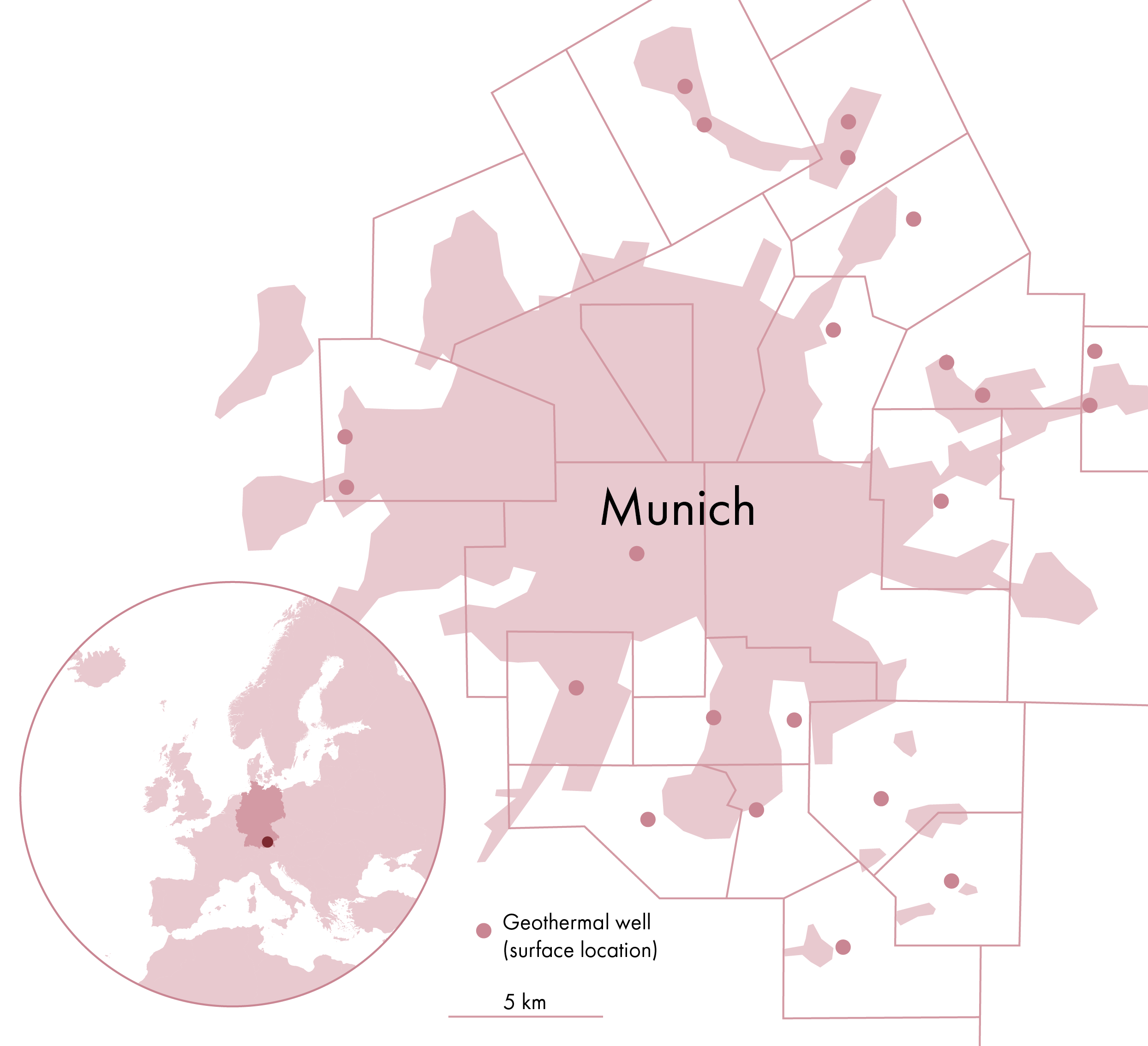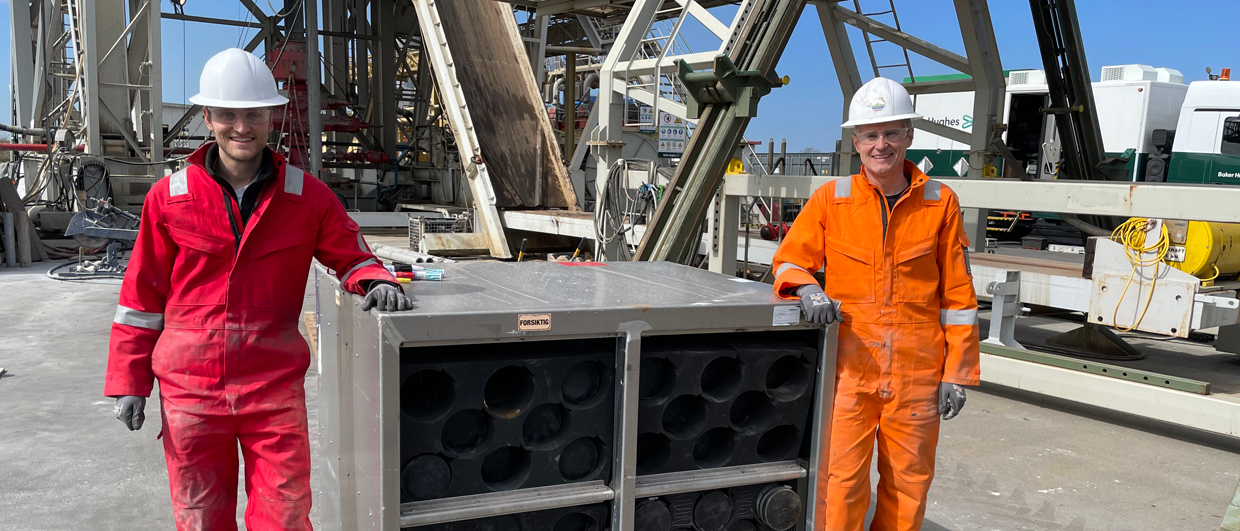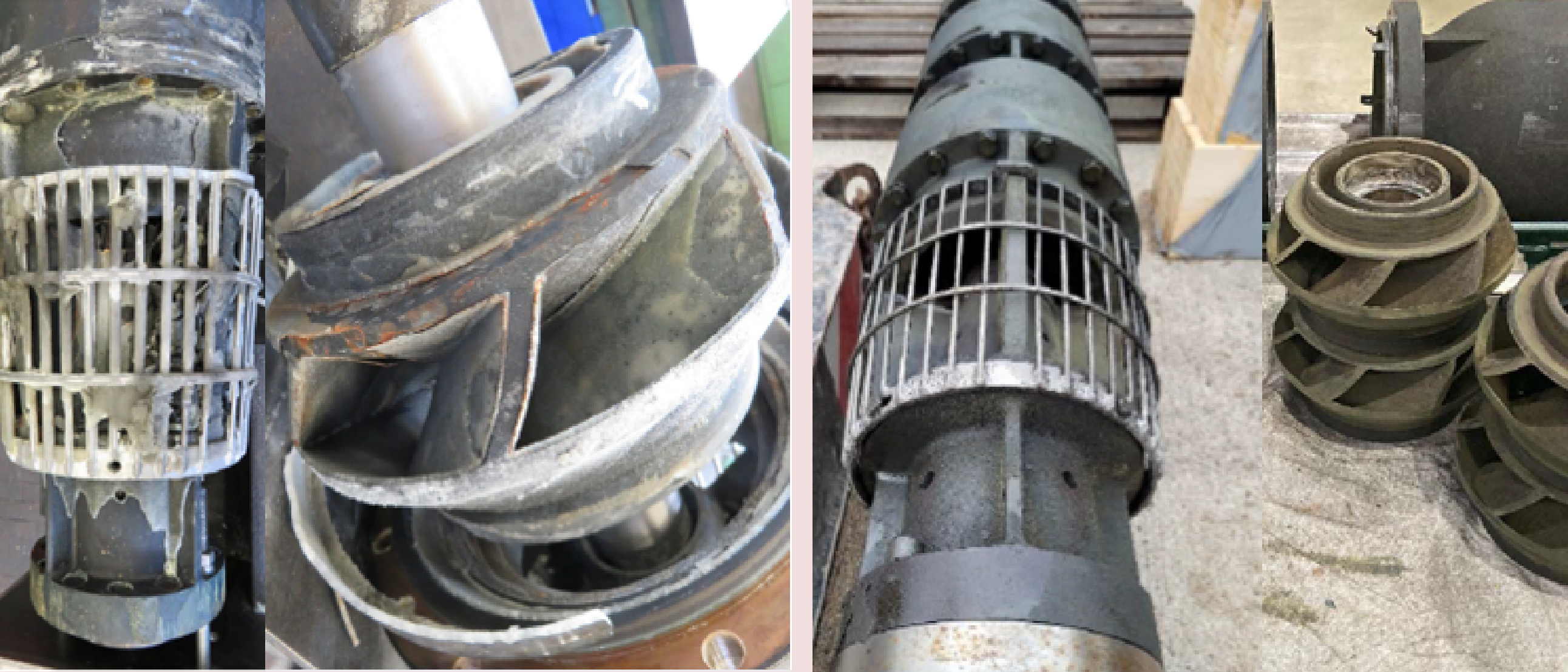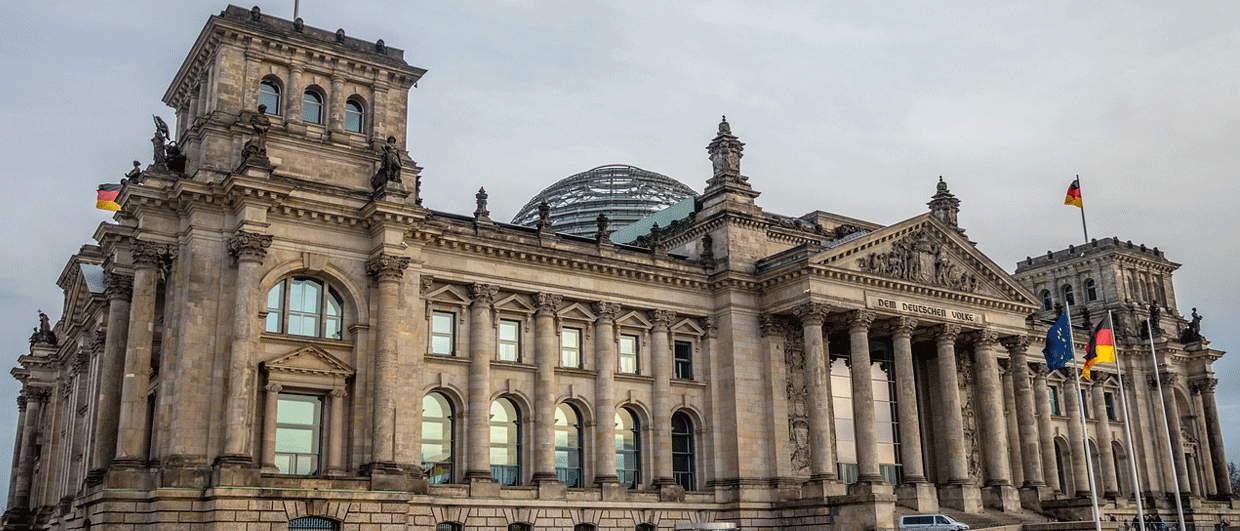When it comes to producing geothermal energy, Munich is without a doubt the place to be in Germany. As the map here clearly shows, the city is dotted by wells producing hot water and wells injecting the cooled liquids. But why is it Munich? Is there something special about this place? The answer is yes, there is. To learn a little more about that, we caught up with Neil Farquharson from Erdwerk, a consultancy firm based in the capital of Bavaria that has been involved with most if not all geothermal projects in the area over the last 20+ years.
“Our city just happens to be situated in the heart of a geological sweet spot”, Neil confirmed during our meeting. “There are in fact two things that make geothermal energy production from this place so attractive. First of all, there is a good reservoir. This is an Upper Jurassic platform carbonate succession with reefs developed in places. ”It is especially these reefs that form targets of the wells, as these often show karstification and hence very favourable properties when it comes to producing water”, he adds.
The second aspect of the geology that makes Munich such an attractive place is the water chemistry. “Current thinking is that the reservoir experienced a phase of complete flushing in Tertiary times”, Neil explains. “Because of that, the produced water is close to the quality of fresh drinking water in places, which is very positive when it comes to scaling and corrosion issues. We still need scale inhibitors in some projects, or routine acidisation to remove carbonate buildup – typically around the pump – but it is much more manageable than in many other regions.”

Security of supply
Producing geothermal energy for district heating, as is the case in Munich, must take place where the demand is, given that hot water cannot be transported over long distances. However, even the production of energy from a source so close by does not mean that there are no risks of interruption.
“The weakest link in some deeper and hotter projects is the submersible pump”, says Neil. These pumps break down sometimes, which means that a workover is required to lift the old pump out of the well and install a new one. For that reason, most projects have a spare pump on-site. This is also the reason why there is always pressure and questions from project developers and investors regarding measures taken to ensure an as long as possible pump life.
Given the number of geothermal projects now active in the Munich area, there is another way to ensure that energy delivery can continue at times of pump failures, and that is through connecting up neighbouring projects. “This could greatly reduce the reliance on oil or gas as contingency fuels, so the feasibility of connecting different heating networks is currently being investigated”, Neil explains.
Gold rush
With the success in the Greater Munich Region and the political pressure to move away from gas-fired heating, more villages and towns near Munich have now also started to investigate geothermal potential of the same Upper Jurassic carbonate succession. “It sometimes feels as if there is a second gold rush going on”, says Neil, following the one that took place between 2005 and 2010.
However, when moving further east of the Greater Munich Region, temperatures in the same carbonate reservoir are on average 5 degrees lower. “A negative thermal anomaly is known to exist, why this is the case is a matter of debate”, Neil said, “but the fact is that Munich is just in the right place when it comes to the successful production of geothermal energy!”





